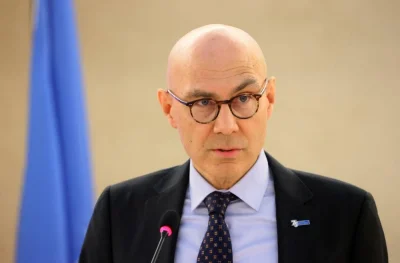|
Sri Lanka raised defence spending to record levels for a second straight year despite pressure to scale down its military after ending decades of ethnic war, official figures showed yesterday. |
The government allocated Rs285bn ($2.22bn) for the defence ministry in calendar 2015, up 12.25% from this year, according to the appropriation bill tabled in parliament yesterday.
There was no immediate comment from the government on its record defence spending to maintain a large security force more than five years after President Mahinda Rajapakse’s troops crushed separatist Tamil rebels.
Colombo is under international pressure to reduce its military presence in the island’s former war zones and take troops away from civilian duties.
However, official sources said a three-year spending plan of the government envisaged even more increases in national security spending to over Rs370bn ($2.89bn) by 2017.
Security forces in May 2009 declared an end to 37 years of ethnic war which had claimed at least 100,000 lives, according to UN estimates.
Defence spending accounts for 16.6% of the government’s projected revenue for 2015, according to official figures.
Sri Lanka’s economy recorded more than 8% growth in the first two full years after the end of the fighting, but is expected to grow at a slightly slower 7.8% this year.
Rajapakse, who holds both the finance and defence portfolios, is due to unveil the full 2015 budget in November, when he is expected to announce revenue
proposals to meet state expenses.
The Asian Development Bank (ADB) yesterday said it has approved an $800mn loan facility to the Sri Lanka government for infrastructure projects to boost post war growth.
The integrated road investment programme, or so-called “iRoad” in Sri Lanka, will upgrade about 2,200km of rural access roads, and rehabilitate and maintain about 400km of national roads under five projects around the country.
“Providing all-weather road access to towns and villages in rural areas will bring greater development and prosperity that will underpin stronger economic growth in Sri Lanka in coming years and decades,” said Chen Chen, senior transport specialist in ADB’s South Asia department.
It will also provide training and support to help national, provincial, and local agencies manage the road network more effectively. The project is expected to be finished by
mid-2024.
Sri Lanka has over 132,000km of roads and has made strong headway in expanding and improving trunk routes since 2007. However, progress on provincial and rural access roads has been slower and many are in poor condition.
The Sri Lanka government’s national strategy for 2010-2020 said poor quality infrastructure is a key constraint to its goal of rapid economic growth and lower poverty, and has estimated the cost of upgrading rural access routes at $1.8bn.
The $100mn first tranche of ADB financing is largely earmarked for road improvements in Southern Province, benefiting about 1.2mn people.
Communities in the area have noted that poor road conditions have been a major obstacle to swift and safe travel, the
statement added.
Since the end of a three decade war in 2009, Sri Lanka’s government has invested heavily in massive infrastructure projects, mostly done with loans from China. Highways, railways, harbour projects and a second international airport are among an estimated 5bn US dollars in loans provided by the Chinese
government.
More than 27 additional agreements, mostly for new infrastructure projects, were also signed during Chinese President Xi Jingping’s visit to Sri Lanka earlier this month.



